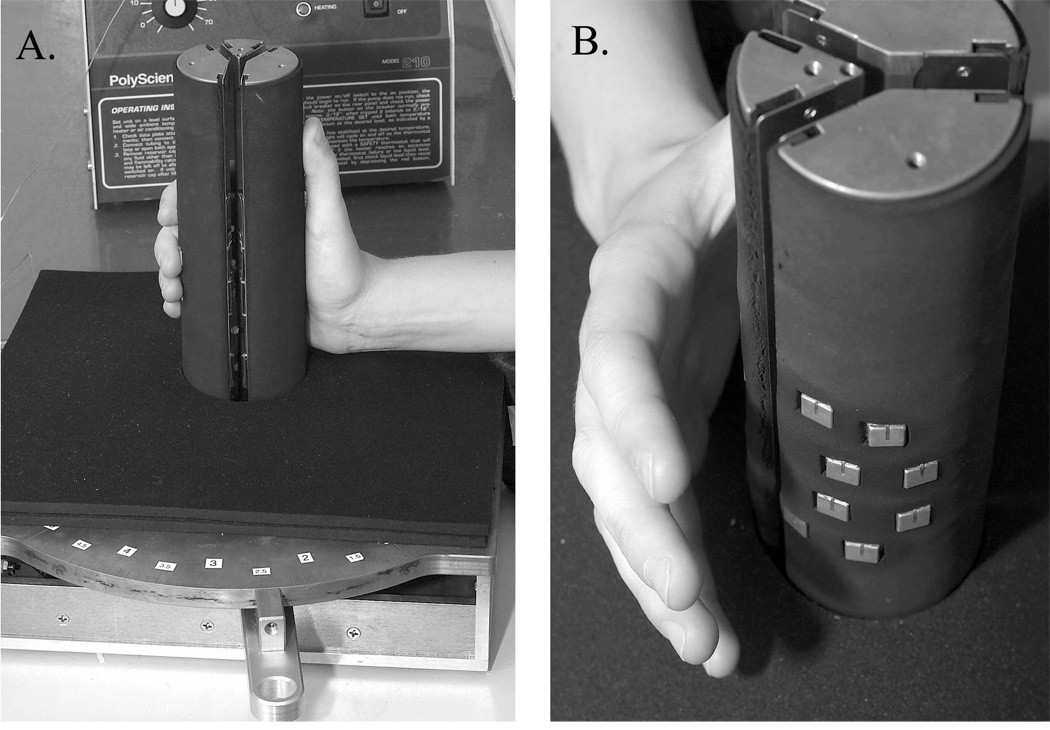Fig 1.
The 16-channel handgrip thermode. A. Side view showing the manner in which subjects grasped the thermode during stimulation. The lever (foreground) changed the circumference of the thermode to fit hands of different size via radial movement of its 3 pie-shaped sections. The 3 sections also served as water-circulated heat sinks. B. View showing the hand lifted from the thermode to reveal the positions of the 8 Peltier modules that contacted the medial and distal phalanxes of the four fingers. Four other modules (not visible) mounted on the smallest pi-shaped section of the thermode contacted the metacarpophalangeal pad at the base of each finger. The groove visible in the copper faceplate of each module contained the thermocouple wire that provided temperature feedback to the thermal control system. Black neoprene insulated the hand and arm from the metal surfaces of the heat-sinks and enabled the Peltier modules to lie flush with the surface of the handgrip.

